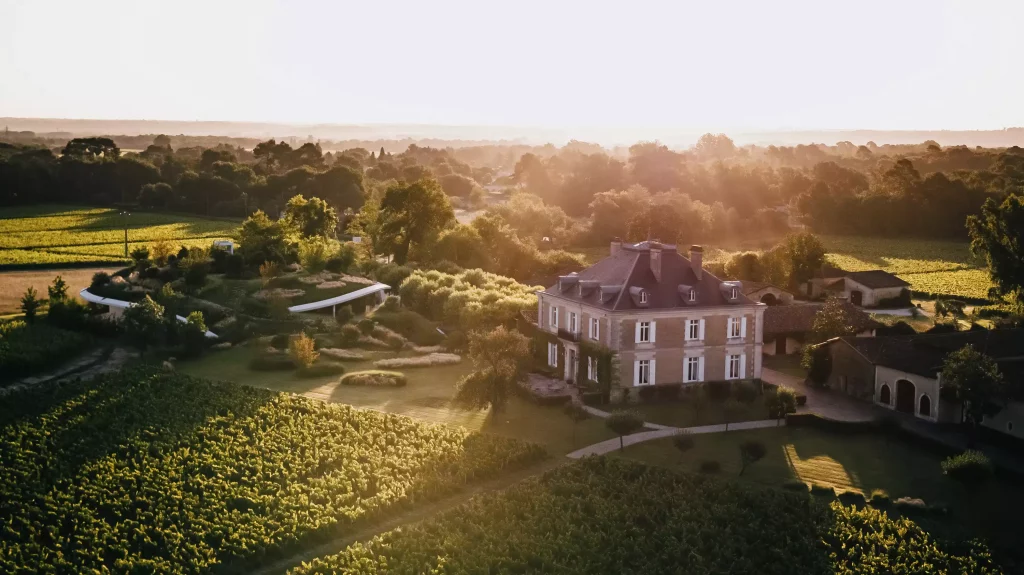‘The landscape and architecture’ Best Of Wine Tourism award is popular in Bordeaux thanks to a wealth of historical, elegant and traditional chateaux now complemented by new architectural marvels. This synergy symbolises what Bordeaux does so well: combines the traditional and the cutting edge.
A wine cellar is first and foremost a wine making tool, but not only. These new cellars are an opportunity to incorporate the latest wine making technology and architectural innovation to reduce the carbon foot print of wine making, to make the cellar tread more lightly on the earth. They can also be a symbol, almost a mission statement, of the philosophy of the property, visually representing its values.
These cellars are not only wonderful for visitors, for which we are grateful, they are also places of work. An excellent environment creates pride and pleasure for the team working there. When you work in beautiful surroundings, chances are you’ll make a beautiful wine.
Here are some architectural gems that prove stunning architecture makes a stunning wine.
Bringing the terroir into the cellar
The 2023 vintage was the first to be made in the new cellars of Château Cantenac Brown in Margaux. This wine is now ageing in barrels as the team prepares for the arrival of their second vintage. The 2023 won’t be disturbed, there’s space for 2,500 barrels over two levels, allowing two vintages to age together.
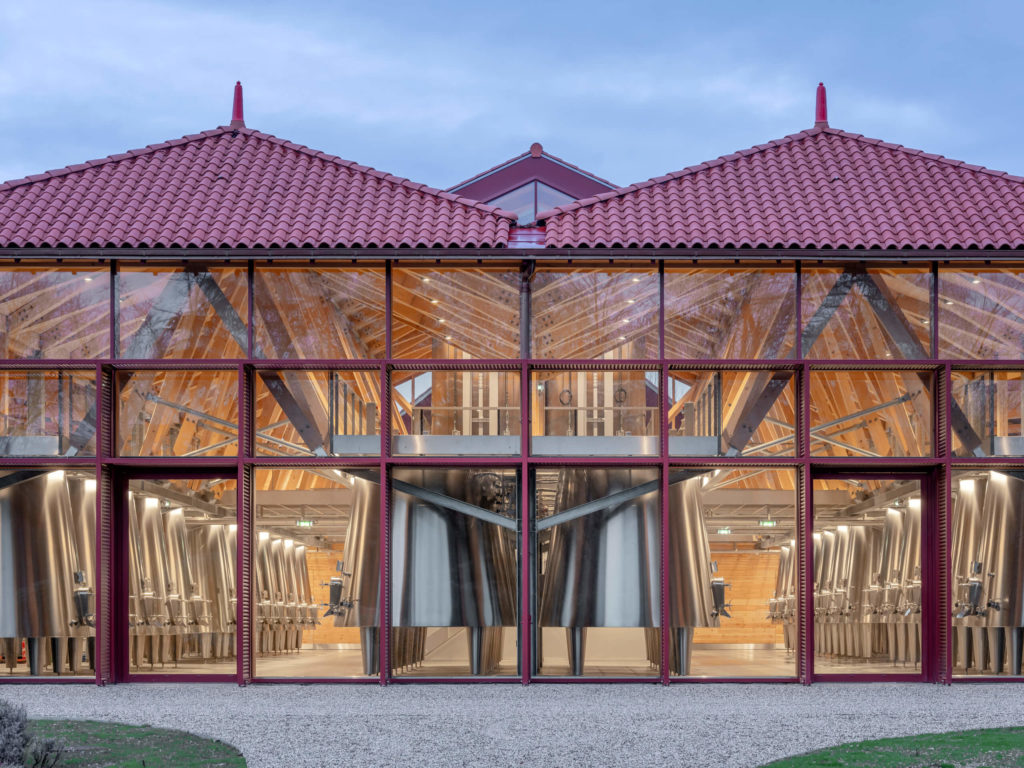
Architect Philippe MADEC, a pioneer of eco-responsible architecture, answered the challenge from owner Tristan Le Lous’ to build a 5,000m2 cellar using no cement (very carbon greedy). The winery is made entirely of natural, untreated bio-sourced materials from the region – wood and raw earth. The walls are one metre thick, made of compressed earth bricks, lined on the outside with earth walls of dyed compacted soil. This creates a thermal inertia that naturally keeps those barrels of 2023 at an optimal humidity and temperature of 15°C.
This construction may be traditional but it houses the latest technology, four vats work as lifts to allow gravity feed, no need for electricity greedy pumps here. It was also an opportunity to increase the number and vary the sizes of the vats allowing more precise plot by plot vinification. Made of stainless steel, insulated to limit electricity used in temperature control, and with mirror-polished stainless steel interiors that need less water for cleaning. All work takes place under natural light, again reducing energy input.
At harvest, the sorters also work in natural light, but protected from the heat and the rain (in an increasingly volatile Bordeaux climate) thanks to a 600 m2 harvest reception hall between the vat room and cellar.
All this has been achieved whilst preserving the historical architecture of the property, the natural landscape and avoiding soil degradation. It is beautiful, functional and user friendly for both workers and the visitors.
Agent for change
The most Pauillac of all the Pauillacs, the cellars of Château Grand Puy Ducasse are right on the waterfront of the town that gives its name to the appellation. It’s an urban winery, an unusual but historical location and the property has been making wine here since 1820, bringing grapes from their vines that are spread across the appellation. A diversity of terroir that contributes to the complexity of the wines.
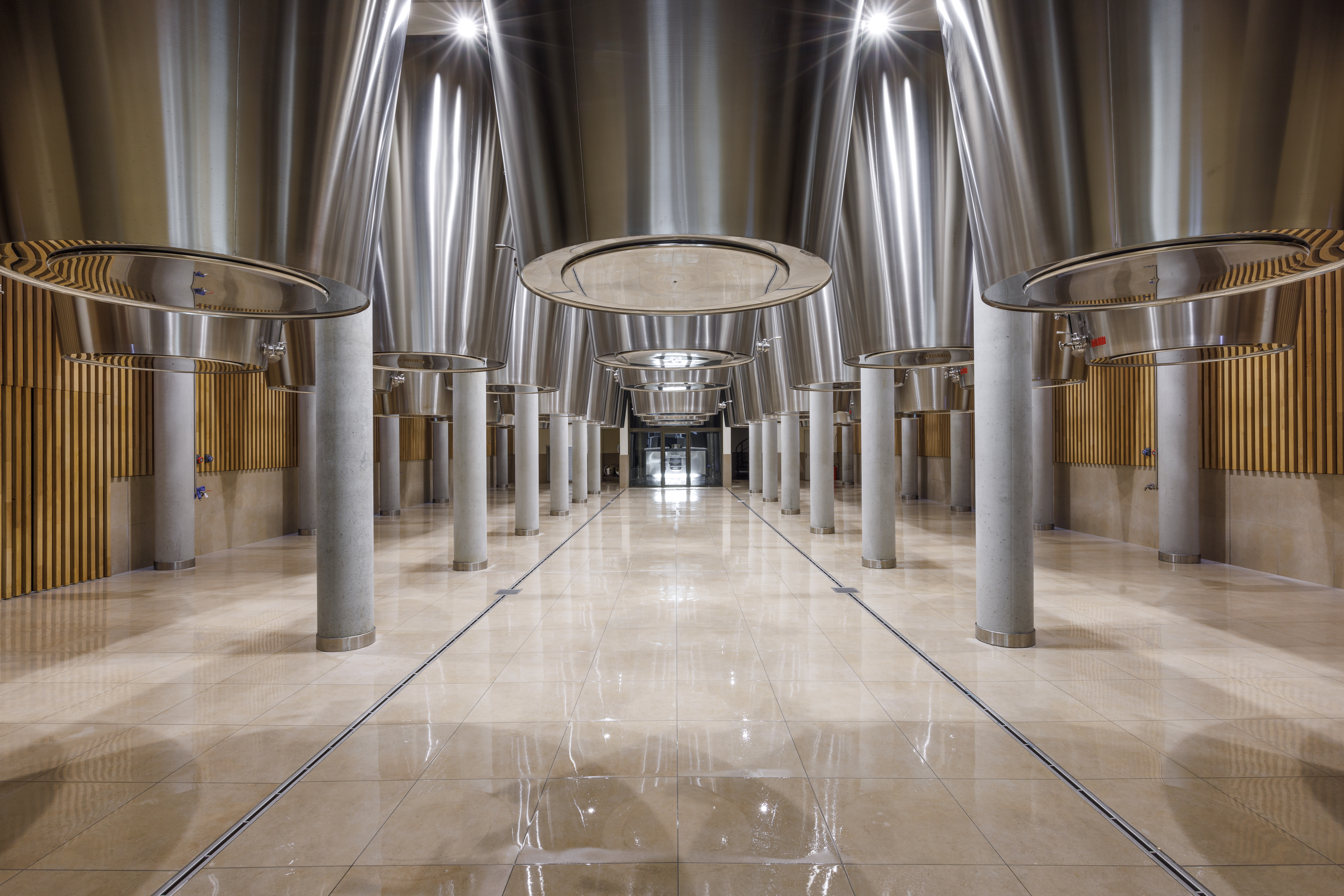
Although the cellars were christened with the 2023 vintage, they opened to visitors in July 2024, after three years of renovation. The space is designed for wine making but also to receive guests. Before reaching the cellar, an itinerary takes visitors on a journey through the beautifully renovated salons and the centuries of history of the 18th century chateau. Once in the cellars, there’s a wow factor, the new layout has doubled number of vats, and they are impressive. Made from shiny stainless steel, suspended from the ceiling for gravity feed, a flight of wild swallows amongst them. A nod to these protected birds that had to be re housed before construction could continue – holding up the opening! There’s a panoramic room above the cellars overlooking the waters of the Gironde Estuary for groups and tastings.
This renovation, at the heart of Pauillac, is a huge plus for the waterfront of the town. Along with the creation of gardens and a walk way along the river, the opening of a new hotel and the arrival of new cruise companies, Pauillac has found a new dynamism.
Keeping it local
Château Branaire Ducru, classified growth in the discreet appellation of Saint Julien also opened their new cellar to visitors this summer. The Maroteaux family embarked on this new adventure with local architects Atelier des Architects Mazières who, in turn, worked exclusively with local craftsmen. It took three years to create new cellars within the existing building. Their objective was to introduce the latest wine making technology but preserve the original footprint, all part of the family’s sustainable philosophy that includes their HVE (Haute Valeur Environmentale) certification and RSE (Corporate Social Responsibility) certification. They are one of only 82 Bordeaux establishments to be awarded the Bordeaux Cultivons Demain certification.
Despite this, they almost doubled the number of vats, increased the natural light, making better working conditions for the team and reduced both water and electricity consumption.
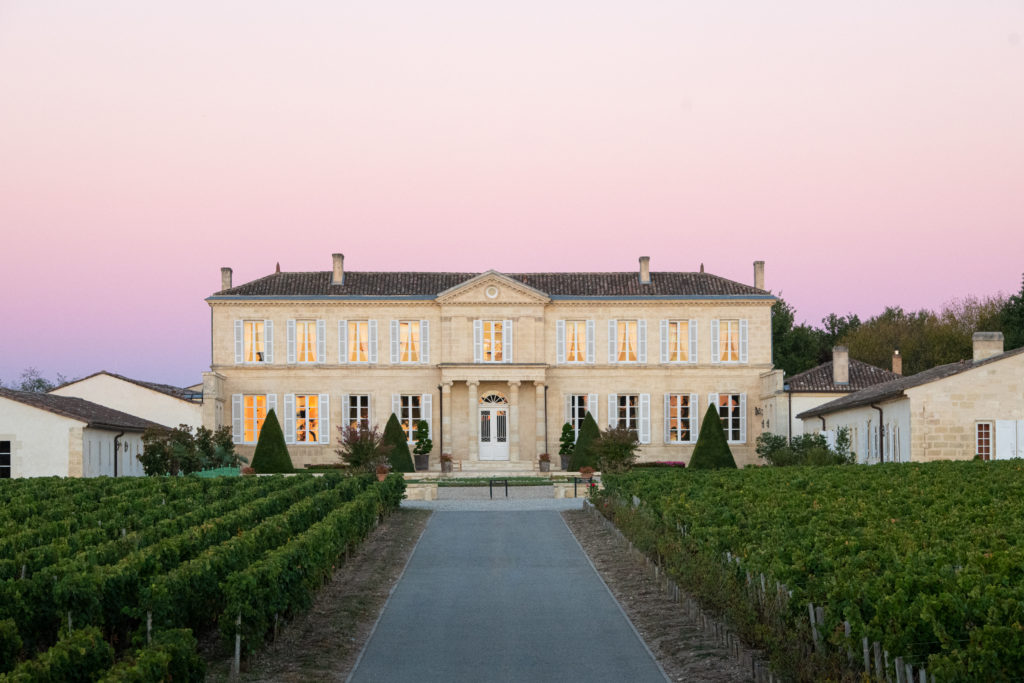
The first wines were made in this new gravity fed cellar with the 2021 vintage, but the new visitors’ centre opened just this summer. Guests follow the journey of the wine from reception of the grapes to the barrel cellars. Large windows illuminate the vat room, ideal for both workers and for visitors to wander through the suspended stainless steel vats.
The tasting room is furnished by another Medoc partner, Ateliers Saint-André, using oak to echo the barrels in the ageing cellars. The space is dominated by a spectacular floating sculpture, hand made from 216 pieces of Limoges porcelain inspired by the natural environment that surrounds the cellars and chateau.
Integrated sustainability
At Chateau Haut Bailly in Pessac Léognan, environment and aesthetics go hand in hand. It took five years to create this stunning structure that perfectly integrates into its surroundings.
The cellar is carbon neutral and has also increased biodiversity, with a roof garden, sown with plants that offer a mix of seeds and berries to support fauna. As well as beautiful, the garden keeps the temperature constant in the cellar. It’s surprisingly discreet, the domed structure is an echo of the gravel outcrops in the vineyard, and blends into the view from the garden over the vineyards.
Despite the living roof, skylights allow natural light to enter the space that descends 10-20 meters underground. This gives natural cooling and needs little energy to moderate temperature. It’s built on the gravity principal, good for both wine and energy consumption, wining a HQE (High quality environment) certification.
Managing director Véronique Sanders wanted the cellar to be positive for the total environment for nature, for the winemakers and visitors. The whole effect is one of elegance and discretion, just like their wine.
It’s not only brand new cellars that offer extraordinary and modern visitor experiences. Château de Cérons has one of Bordeaux oldest cellars unchanged for 300 years! An unusual find even in historic Bordeaux. This dark, untouched cellar is the perfect backdrop for a unique visual adventure, where modern technology takes you on a poetic journey from the Pyrenees to a glass of the delicious nectar of Cérons wine.
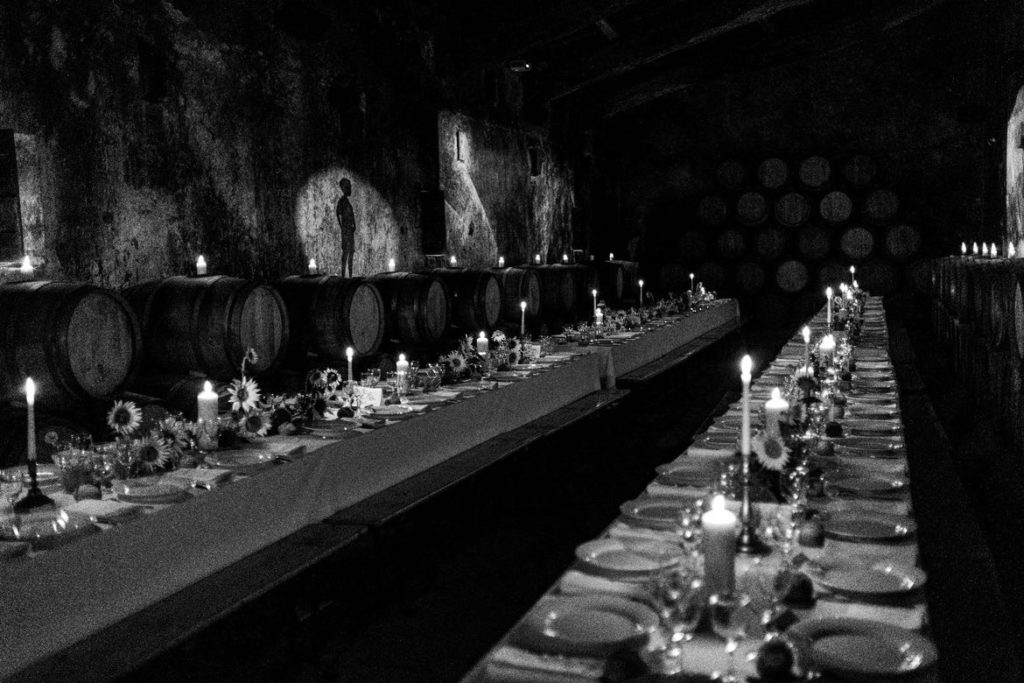
Stepping back into daylight, thanks again to digital technology, another adventure awaits. It takes you through the natural environment of the property, through the vines and the orchards to the banks of the Garonne. Then back to the stunning 17th century classified chateau for a tasting of the wines.
These are but a few of the examples of innovation working to respect the history of the region, the natural and working environments, the visitor experience and of course improving the quality of the wine.
Bordeaux architectural marvels thrills the wine enthusiast and protect the environment.
Author : Wendy Narby - Insider Tasting Photo credits : ©wendynarby
